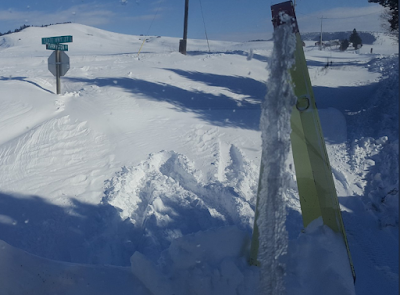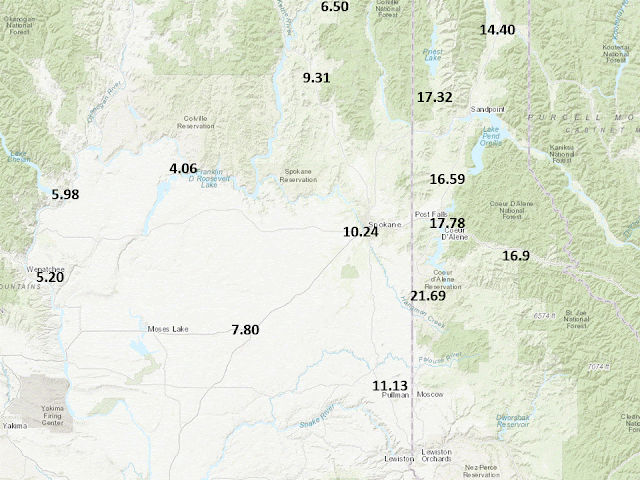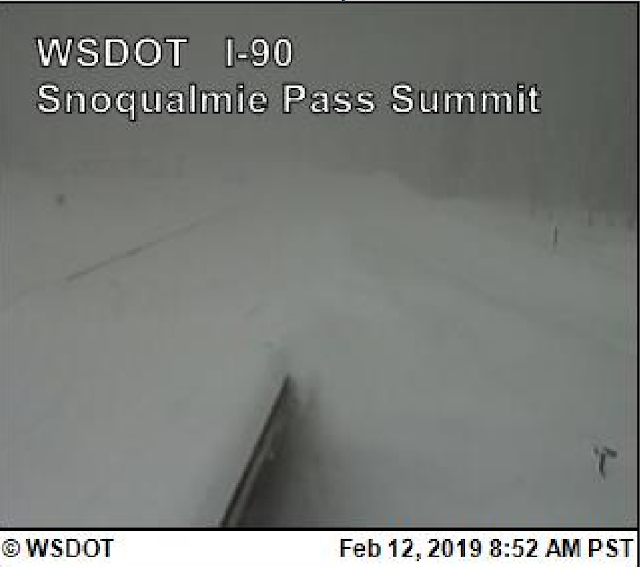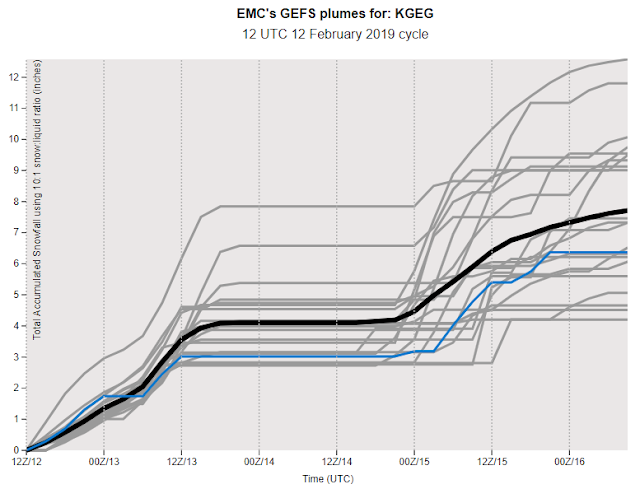--------------------------------------------------------------------------------------------------------------------------
What a month it has been! In this blog will highlight some of the top events of the month and look at how the month finished by the numbers. Hint - several snow records broken.
Feb 9th Blizzard
Strong winds and snow brought blowing and drifting snow to much of the region. This was especially true on the Waterville Plateau and Moses Lake area where blizzard conditions brought scenes like this on Highway 2 east of Waterville.
 |
| Highway 2 east of Waterville - Photo courtesy of WADOT |
Road closures were numerous, with a lot of this going on to get the roads back open.
 |
| State Route 27 near Colfax - Photo courtesy of WSDOT |
Late Feb 11-Feb 12 Bonners Ferry breaks 2 day snow record
A sharp frontal boundary over Bonners Ferry, Idaho resulted in a band of very heavy snowfall. This brought a record 2 day snowfall as noted below with 24.7". These are morning 24 hour observations and thus the combined total is from the Feb 12th and 13th reports.
Feb 25-27th Columbia Basin and Palouse snow/drifting snow
Despite being so late in the month, more rounds of snow moved in. The snow remained of the powder variety making it very susceptible to drifting as the winds picked up. Several road closures occurred as snow drifts reached 12 feet high in spots which made it a challenge to open roads like the picture below shows. Yes, that's a stop sign in the picture.
 |
| State Route 27 - Photo courtesy of WSDOT |
February by the numbers
Snow
Let's begin with snow. Several sites finished in the top 5 list of total snowfall as shown below.
How about number of days of February snow? Many records broken here as well.
How about the amount of snow on the ground for February 28th? Surprisingly while the snow is deep in many spots, records for the date were hard to find. However, Lewiston and Spokane made the list. Lewiston smashed its previous record.
Note for Spokane we have about the same amount of snow on the ground now as we had on February 28th, 1969. Note the snow depth for this day in 1969 was missing, but showed 17" the day before and 16" the day after.
Now there was one part of our region where total snow this month wasn't a big deal. Where you ask? Parts of North Central Washington including Omak and Winthrop finished drier than normal in terms of precipitation amounts.
Yet one last record related to precipitation to mention here. Again for Lewiston where 3.42" of total precipitation has fallen for the month breaking the monthly February precipitation record.
Temperatures
Now how about the cold temperatures?
Note that several stations finished in the top 10, but none were coldest on record. Again, these numbers are preliminary since we are awaiting some final numbers for the past few days for some locations. As you can see February 1936 was quite the brutally cold month across the region.
How much colder compared to normal has it been? Here is a map below
Most places are in the blue shading (10-15F below normal). Montana was especially in the freezer this month.














































